
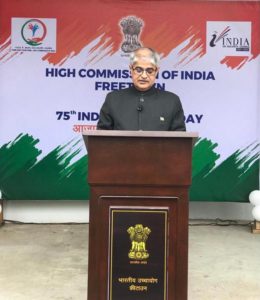
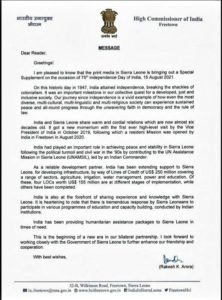
Spice up your Immunity
by
Gita Hari
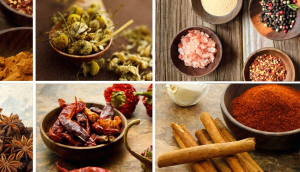
Since time immemorial, traditional spices and herbs have played a vital role as immuno-boosters in Indian cuisine. Here’s a look at how these ingredients make their everyday food not just tasty, but also wholesome.
According to ancient Indian texts, aushadham ucchyathe sarvam, which means food is the absolute cure and healer. Traditionally, in Indian cuisine, vegetables and spices are used in a dish according to their nutritional benefits and their ability to strengthen our immune system, which in turn, can protect us from ailments and infections. A reason why it is advised to include a balanced mix of spices and herbs in our daily meal plan to provide a regular boost to our immune system. Spices like turmeric, saffron, cloves, cinnamon, carom seeds, ginger and garlic are known to have a plethora of beneficial properties. Herbs like mint, tulsi (Holy Basil), and leaves of neem and moringa trees are said to have several health benefits. In India, with diverse preparations being made from more or less the same ingredients, spices play a significant role in culinary preparations.
For instance, turmeric – the commonest of all Indian spices – is added in almost all dishes. It not only lends the dish a golden hue but is known for its antiseptic properties and in reducing existing metabolic syndromes. We have often had our mothers urge us to drink warm milk mixed with turmeric to treat dry cough, sore throat and purify the blood of toxins, thereby upping the immunity quotient. Today, this drink is available at many upscale cafes as turmeric latte. Ginger too has similar health benefits.
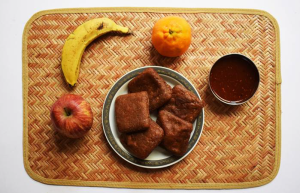
kuttu ka aata
There are many such examples of beneficial herbs and spices being added to dishes to lend a distinct flavour and also to make them healthier. For example, moringa leaves and fruits (drumsticks) are used in curries across north India to help fight bacterial afflictions. Neem too is used in meals and brewed into a thick concoction called kadha. A special neem leaves chutney is prepared in Maharashtra during the festival of Gudi Padwa. Neem has proven remedy to cure loss of appetite, fever and also boost cardiac strength. Curry leaves, the staple garnish in Indian cooking across states, is a popular natural anti-oxidant. “Almost all parts of a Azadirachta indica or neem tree have beneficial properties – the leaves had raw or cooked, purify blood and aid digestion; the bark extract has been found to cure stomach and intestinal ulcers and neem oil reduces skin blemishes. The oil is also a cure to breathing problems,” says nutritionist Kavita Devgan.
According to Dr Pooja Thacker, Head of Department Dietetics at Bhatia Hospital, Mumbai, “The clinical trials of tulsi on humans have shown it to be a unique combination of anti-viral, anti-microbial, anti-fungal, anti-malarial. It can reduce hypertension, arthritic pain and depression. It acts as anti-epileptic, anti-inflammatory, hepato protective, anti-ulcer, and anti-asthmatic.” Asafoetida relieves bloating, flatulence and irritable bowel syndrome (IBS) while fenugreek is known to control long standing ailments like diabetes. Cumin and bishop’s weed, the culinary equivalents of modern indigestion drugs, help digestion and check food-borne disorders. Pepper improves absorption of essential nutrients and promotes gut health. A pepper drink is often the go-to cure in many Indian homes to fight a flu.
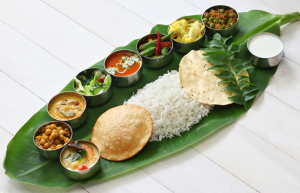
Asafoetida, fenugreek, black pepper, coriander and cumin seeds have anti-inflammatory properties, and are extensively used in Indian cuisine. Quintessential South Indian dishes like sambhar (lentil curry with vegetables), rasam (a clear sour soup) and even curries are flavoured with these spices. Bisibele Bhath of Karnataka is another classic rice and lentil preparation using various spices and nutritious vegetables to avert deficiencies. If dishes like pongal from the South uses crushed pepper and cumin, Gujarat finds its comfort food in khichdi – wholesome rice and lentil dish prepared with minimal spices like cumin and ginger. While restoring digestive enzymes, this one-dish meal builds up energy and resistance levels in the body to fight infections. Khichdi is often the remedy to dietary distress and is used to reset the digestive system with its simple albeit healthy ingredients.
Various dried and powdered spices and herbs in traditional Marwari preparations from Rajasthan like ker sangri and pitod ka saag ensure physical strength. These dishes, often heavy in the use of garlic and onion, ensure that the body is prepared against the heat in most parts of the desert state. Maharashtra has its share of wholesome meal in usal/misal, consisting of multiple sprouts in a spice-rich gravy that has loads of ginger and garlic and ensures essential nutrients like protiens. The liberal use of lemons and citrus fruits, which do not allow for thick gravy preparation, ensure the adequate dosage of Vitamin C and a strong defense against the hot and humid environs around Maharashtra.
Punjabi cuisine is hugely popular for the intoxicating aromas of spices and herbs used generously in its recipes. Just as the fragranced waft of garam masala (a rich mix of spices like cardamom, clove, star anise and cinnamon) from North Indian kitchens are simply irresistible they also burst with vigour. Cinnamon and cloves can be counted as immunity-warriors for their anti-fungal and anti-bacterial properties. These dishes often include or end with a generous portion of fennel, ensuring that there is no acidity.
Plenty of star anise, bay leaves and saffron can be found in the dishes from Kashmir. Dr Thacker throws light on saffron’s benefits, “It helps in curbing asthma by reducing inflammation. Tests have proven that having saffron regularly can reduce Immunoglobin M and Immunoglobin G, which directly reduce asthma.” The star among the Valley’s contribution to India’s spice treasure is the Kashmiri red chilli, full of minerals besides black cumin (shah jeera), black cardamom and white pepper.
The signature lamb dish, rogan josh with curd and a variety of spices is a robust low-cholesterol delicacy. Embracing mindfulness while eating and fresh, home-cooked meals can help you kick off stress, discomfort, and depression. Experts say that ingestion of food within four to five hours of cooking is the best. It’s interesting that even today, the ancient concept of a balanced Sattvik meal, cooked fresh with a bouquet of spices, is considered one of the healthiest in the world.
The Technology powerhouse
by
Remya Haridasan
The Bhabha Atomic Research Centre has made unsurpassable contributions to all sectors of India’s nation building. From power generation and national security to agriculture, healthcare, waste management, water technologies and food processing, the research and innovations of the premier nuclear re-search institute have put it on the global map.
Nestled in the lap of Trombay Hills, on the shores of the Arabian Sea in Mumbai, stands India’s premier institution for nuclear research, the Bhabha Atomic Research Centre (BARC). True to its motto “Atoms in service of the nation”, the sprawling 1,100-acre establishment houses eight nuclear research reactors and several laboratories engaged in cutting-edge multidisciplinary research to harness nuclear energy for the benefit of the nation. It is imperative to say that BARC nurtures research not only to cater to the needs of the nuclear sector but also of the society at large, in the form of researches in agricultural, healthcare, waste management, treatment of water, food processing, etc. The vast applications that the research at BARC caters to make it a magnanimous institution of the country that is not only at the forefront of technology at a national level but has also helped India achieve a strong standing in the global arena of science and technology.
The Beginning
It all started with the futuristic vision of noted scientist and visionary Dr. Homi Jehangir Bhabha, to build a stronger India by harnessing the power of atomic energy. Dr. Bhabha, known as the “Father of the Indian Nuclear Program”, established the Atomic Energy Establishment, Trombay (AEET), in 1954, for promoting multidisciplinary research in nuclear science and engineering. After his demise, AEET was renamed as Bhabha Atomic Research Centre, in 1967.
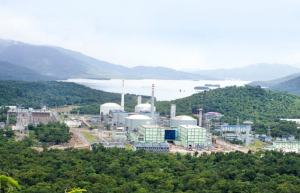
The true legacy of BARC lies in its world-class research reactors, which provided the windows to study and understand nuclear radiation and its effects, and gave India the confidence to venture into nuclear power generation. BARC currently has two operational research reactors, namely APSARA-U (upgraded) and DHRUVA. Six older research reactors have been decommissioned, of which, the APSARA reactor was Asia’s first nuclear reactor set up in 1956. The new APSARA-U (its upgraded version) achieved criticality in September 2018.
The knowledge gained from the research reactors helped India to gain self-sufficiency in nuclear power generation and today, the 22 operating nuclear power reactors of the country, contribute 1.8 per cent (6,780 MW) of the total electricity generated in the country. In December 2018, a 220 MW unit of the Kaiga Atomic Power Station in Karnataka, broke the world record for the longest continuous operation (962 days) of a nuclear reactor. The previous record was of 940 days. This achievement is testament to India’s advancement in nuclear reactor technology, both in terms of the advanced electronics and instrumentation, which is responsible for the safety and control of the reactor, and the strength of the structural materials that can withstand extreme conditions of temperature, pressure and radiation.
Agriculture
In agriculture, BARC has developed 47 crop varieties, having improved characteristics like higher yield and improved disease resistance, which have been released for commercial cultivation in the country. Some of the very popular varieties are groundnut and rice, which are grown extensively. Other crop varieties include mustard, mung bean, cow peas, chick peas, etc.
Healthcare
Bhabhatron, the radiotherapy device developed by BARC, has revolutionised cancer treatment in the country by providing an affordable, high-performance Co-60 teletherapy machine. Bhabhatron units are installed in many cancer hospitals in India and are also exported to the Middle East, Africa, South America and Eastern Europe.
Food Processing
BARC does extensive research in radiation processed foods. Because of shelf life extension, such food products are both exported and sold in domestic markets. This has greatly helped in the preservation, storage, distribution and export of large quantities of agricultural produce. The wholesomeness and nutritional adequacy of irradiated food has been well accepted nationally by Ministry of Food Processing Industries and internationally by World Health Organiszation (WHO).
Non-Nuclear Ventures
BARC has proven its mettle even in technologies that do not use radiation. Some of the noteworthy achievements include technologies for water treatment, waste management and material research. There are several technologies related to water, including ones that detect contamination and produce clean drinking water.Domestic water purifiers that are completely passive; kits for the detection of chromium and fluoride, and removal of fluoride, iron and arsenic from water, and a membrane pouch for water purification, which is especially useful during natural disasters, are some of the promising indigenous technologies developed by BARC and are being deployed at a large scale.
The Nisargruna plant is a successful technology developed by BARC for composting biodegradable waste to high quality manure and methane gas. It can be easily set up to treat wet waste directly at the source, like in kitchens or canteens of big hospitals, hotels, factories and residential complexes.In advanced material research, a recent feat achieved by BARC is the Bhabha Kavach, a light-weight bulletproof jacket for the armed forces. These are made of high ballistic performance composite sheets (called BARC Nano-Sheets) which make the jackets weigh only about 6.6 kg compared to the 17 kg weight of conventional jackets.
COVID-19 efforts
The major developments by BARC in the fight against COVID-19 include use of radiation for disinfection of PPE kits for sterilisation/reuse, design of high-quality masks and development of a low-cost diagnostic kit.
The International Stage
BARC, as a part of the Department of Atomic Energy (DAE) is contributing significantly to some of the mega-scale science projects being implemented through international collaboration. Some of these projects include the Large Hadron Collider (LHC) with CERN, Facility for Anti-proton and Ion Research (FAIR), India-based Neutrino Observatory (INO), etc.BARC, with a strong workforce of 14,000 employees including 4,500 scientists, continues to strive to achieve security for the nation in terms of energy, agriculture, health, water, food and homeland security, using the power of the most humble atom.
About the author: Remya Haridasan worked at the Bhabha Atomic Research Centre, Mumbai, for six years and is currently working as a scientist on deputation to the Office of the Principal Scientific Adviser to the Government of India, New Delhi.
The sun shines bright on Indian technology start-ups
by
Aashish Chandorkar
Backed by rapid digitalisation, tech adoption and liberal government policies, India’s technology start-up ecosystem is witnessing a significant growth trajectory. The next step will be global expansion.
A key tenet of Indian entrepreneurship growth in the last few years has been to support and catalyse job-givers in the economy. Given India’s fast workforce, it is critical that new employment opportunities are created by risk-taking first generation entrepreneurs, who dream of building strong global firms out of India. Technology start-ups have been at the forefront of this thinking.

There are 500 unicorns around the world. These are technology start-ups with more than USD one billion in valuation. Forty-four of them are now in India – about nine per cent of the total. Twelve of these unicorns got to the coveted valuation benchmark in 2020 – a year otherwise throttled by the global pandemic.
This shows that the Indian start-up ecosystem is not just innovative but also robust. The ability to scale up and demonstrate viable business models has set Indian start-ups apart. The 44 technology unicorns have been valued at more than USD 106 billion. To put this in perspective, the market capitalisation of the National Stock Exchange is USD 2.7 trillion. The top 44 technology firms are already valued worth four per cent of the old economy, some of them being global leaders in their own right.
These 44 firms have also created about 1.5 million jobs in direct or indirect employment. Many of these jobs have been in the Gig economy sector (a free market system in which temporary positions are common and independent workers are hired for short-term commitments), which directly benefits job seekers who may not have the best educational qualifications, but who are willing to work hard towards improving their and their family’s standard of living. That the Indian start-up ecosystem has come this far should hardly be a surprise.
India has always had the brainpower behind some of the biggest technology firms globally. This brainpower used to make a beeline for foreign shores a few years ago. Now, many individuals are searching for opportunities locally and finding them. The access to capital for Indian start-ups is also rapidly improving. With the world awash with liquidity owing to loose monetary policies of global central banks, India has attracted large investments. This is reflected year after year in the burgeoning Foreign Direct Investment (FDI) figures, where India is one of the hottest destinations.
The next stop for Indian technology start-ups is to expand globally, conquering new markets. Given India’s market, which is not just large but also diverse in terms of consumer behaviour characteristics – the global leap of faith may be a matter of when and not if. To facilitate Indian start-ups getting a platform alongside similar firms elsewhere, the Department for Promotion of Industry and Internal Trade (DPIIT), which works under the Ministry of Commerce and Industry, had organised Prarambh: Startup India International Summit in January 2021.
This two-day summit was attended by several participants from BIMSTEC countries. BIMSTEC or Bay of Bengal Initiative for Multi-Sectoral Technical and Economic Cooperation (BIMSTEC) is an economic platform that India has been actively participating in. This event attracted investors, scholars, policy makers and start-up professionals from various member nations in a first-of-its-kind exchange of ideas. Such global platforms are significant in the region, as many countries share a similar economic trajectory as well as consumer traits. The experience obtained in a large country like India can be transferred relatively easily to other markets, where it may be possible to apply the Indian success.
In fact, several Indian productivity applications are already being used in other countries in the region. Especially in the areas of merchant automation, new-age mobility, and social commerce and networking, there are already enough proofs of concept that the mantra for commercial success in India and in the other countries in the region may not be too different. Such platforms thus provide the exploratory opportunities for Indian start-ups to expand geographically.
In the recently-presented Union Budget, the government has allowed Indian firms to list themselves overseas without listing in India first. The Indian securities market regulator is also working to create a facilitative environment to ensure such firms that opt to raise capital outside won’t be subject to dual jurisdictions and regulations. These steps are critical in ensuring that growing and promising Indian firms are not starved for resources.
In the recent past, the technology start-ups have also diversified. While the initial wave of unicorns came from FinTech (finance and technology) and consumer apps in food and mobility aggregation businesses, the recent success stories go much beyond. Technology innovators are now making a dent in varied areas like commercial logistics, merchant automation, construction management and healthcare.
This change is critical for Indian economy as a whole, too. As new players enter the market and start challenging long-time incumbents, yesteryear leaders are forced to respond in kind. This leads to new investments in research and development, and employee upskilling, which, in turn, leads to greater economic productivity and, eventually, higher wages. In this sense, start-ups also play a critical role in uplifting and modernising old economy players they compete with, creating a virtuous economic cycle.
With an educated workforce, well-integrated in the global ways of working, and a young nation comfortable with using mobile-first technology, Indian start-ups are on a fast growth trajectory. Some of these players will eventually become national and global business leaders in their own right.
Mighty millets:
Super Grains of Power
by
Prof Rajeev K Varshney
The United Nations General Assembly adopted an India-sponsored resolution to mark 2023 as the international year of millets. We delve into India’s millet production, their nutritional value and how the Indian government is promoting millets and its cultivation.
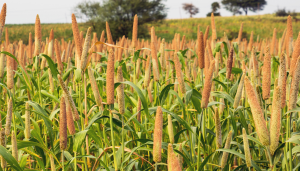
Super-grain, super-food and wonder-grain are some of the adjectives often used to describe millets, one of the oldest foods known to humans, and probably the first grain used for domestic purposes. The unanimous adoption by the United Nations General Assembly (UNGA) of the resolution to declare 2023 as the International Year of Millets, a proposal sponsored by India and supported by over 70 nations, underlines the international community’s support to recognise the importance and benefits of these grains for the global food system.
Speaking on the subject, India’s permanent representative to the UN, ambassador TS Tirumurti, said, “There is an urgent need to promote the nutritional and ecological benefit of millets to consumers, producers, and decision-makers, to improve production efficiencies, research and development investments, and food sector linkages”. He expressed gratitude to all the co-sponsors, especially Bangladesh, Kenya, Nepal, Nigeria, Russia, Senegal and all member states of the UN for their strong support.
In India, traces of millets have been found in the archaeological sites of Harappa and Mohenjo-daro, and several ancient Indian scriptures make references to millets. For many years, millets were a part of our daily diet. Today, there is a growing realisation among Indian farmers that cultivating millets requires fewer inputs and it is also an economically viable option, especially in harsh and dry environments. This is supported by the new-found knowledge on the health benefits of millets. Also, over the last few years, the Indian government has been making extensive efforts to encourage the cultivation of millets. The Union Government of India, headed by Prime Minister Narendra Modi, had declared 2018 as the National Year of Millets to boost production of the nutrient-rich grains.
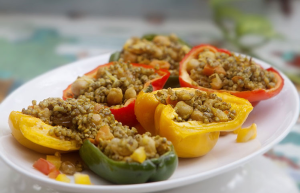
Millets are an important staple cereal crop for millions of smallholder dry-land farmers across Asia and sub-Saharan Africa. They are also called nutri-cereals or dry-land cereals, and include sorghum (jowar), pearl millet (bajra), finger millet (ragi), foxtail millet (kangni), proso millet (chena), barnyard millet (samvat ke chawal) and kodo millet (kodon), and offer high nutritional benefits. Millets are also referred to as ‘Smart Food’, which are good for the consumers, the planet and the farmers.
For instance, finger millet has three times the amount of calcium as in milk, and most millets have very high levels of iron and zinc, low glycemic index, good levels of protein and fibre, and are gluten-free. Millets can also contribute to addressing some of the largest global issues in unison: poor diet (malnutrition to obesity); environmental issues (climate change, water scarcity and environmental degradation); and rural poverty. They have a low carbon footprint and have the ability to survive and grow in warm climate with very little water. They are climate-smart and hence constitute a good risk management strategy for farmers as compared to rice and wheat crops, which require higher quantities of water and fertiliser supplements.
Indian millets at the forefront
Efforts to bring Indian millets to the international forefront began in October 2017, during the Committee on Food Security event in Rome. A series of meetings involving the Government of India (GOI), the agricultural research body International Crops Research Institute for the Semi-Arid Tropics (ICRISAT) and other stakeholders were organised at the Food and Agriculture Organization (FAO) of the UN to identify the process of promoting the idea with FAO departments and the Indian Embassy in Rome. Following this initial step, in November 2017, the Government of India’s then Union Agriculture Minister Radha Mohan Singh wrote to the UN Secretary-General, Antonio Guterres, requesting the inclusion of the proposal in the UN General Assembly agenda for an International Year of Millets in 2018.
Although this process can typically take five years, the GOI, ICRISAT, the Consultative Group on International Agricultural Research (CGIAR), the Indian Council of Agricultural Research (ICAR) of the Ministry of Agriculture & Farmers’ Welfare and its millets research institute, ICAR – Indian Institute of Millets Research (IIMR), along with others pursued the cause, which came to fruition in 2021.
It is encouraging to note that the world is talking about depleting natural resources like arable land and water, and the pressing need to produce more to meet the food and nutritional requirements of the growing population. Staple crops like rice and wheat are part of our traditional diets but are known to be water guzzlers, challenging our farmers, consumers and policy makers to explore ways to diversify our cropping system. Millets suit this requirement.
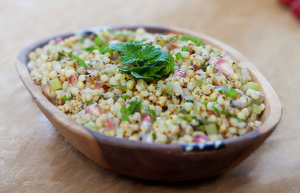
Easy to cultivate
Tolerant to drought and high temperature, and other climate change vagaries, millets are mostly cultivated on low-fertile land, mountainous, tribal and rain-fed areas of India like Andhra Pradesh, Chhattisgarh, Gujarat, Haryana, Madhya Pradesh, Odisha, Rajasthan, Maharashtra, Karnataka, Uttar Pradesh, Tamil Nadu and Telangana. As per the Food and Agriculture Organization’ data, the global millet production stands at about 90 million tonnes, of which India’s share is about 19 million tonnes.
However, as productivity for a majority of millets is very low, several Indian and international organisations have been working towards enhancing crop productivity by using multi-disciplinary approaches. For instance, the Pearl Millet Genome Sequencing Consortium, comprising 30 institutions, decoded the genome of pearl millet and identified genes for drought-and-heat-tolerance that may be useful not only for millets but also for other major cereals. These researches have contributed to developing several high-yielding hybrids and improved varieties of several millets that are grown by farmers in India.
Mission millet
At the national level, the Government of India has been promoting the cultivation of millets on a mission mode to achieve nutritional security, following recommendations by a committee headed by NITI Aayog. Indian Prime Minister Narendra Modi dedicated 17 biofortified varieties of eight crops, which included two varieties of finger millets and one variety of little millet, on October 16, 2020, on the 75th anniversary of the FAO. As a part of the government’s initiative under the National Food Security Act, state governments have been advised to procure millets at minimum support price and distribute them under the public distribution system (PDS).
India’s National Nutrition Mission, POSHAN Abhiyaan, has also advised state governments to include millets under large public system delivery channels such as Integrated Child Development Services, Mid-Day Meals etc. While the government and research organisations work towards higher productivity of millets, nutritionists and chefs are contributing towards the promotion of millets by creating unique millet dishes.
Promotions are being done on easy ways to cook millets, convenient tasty millet recipes, and word is being spread about their nutritional benefits and environment-friendly qualities among all stakeholders – both at the national and international level. The UN Food Systems Summit 2021 also offers additional opportunity to make the food systems sustainable and resilient. The declaration of 2023 as the ‘International Year of Millets’ will certainly support all these efforts and make millets a popular and healthy food choice for all.






Mera Bharat mahan